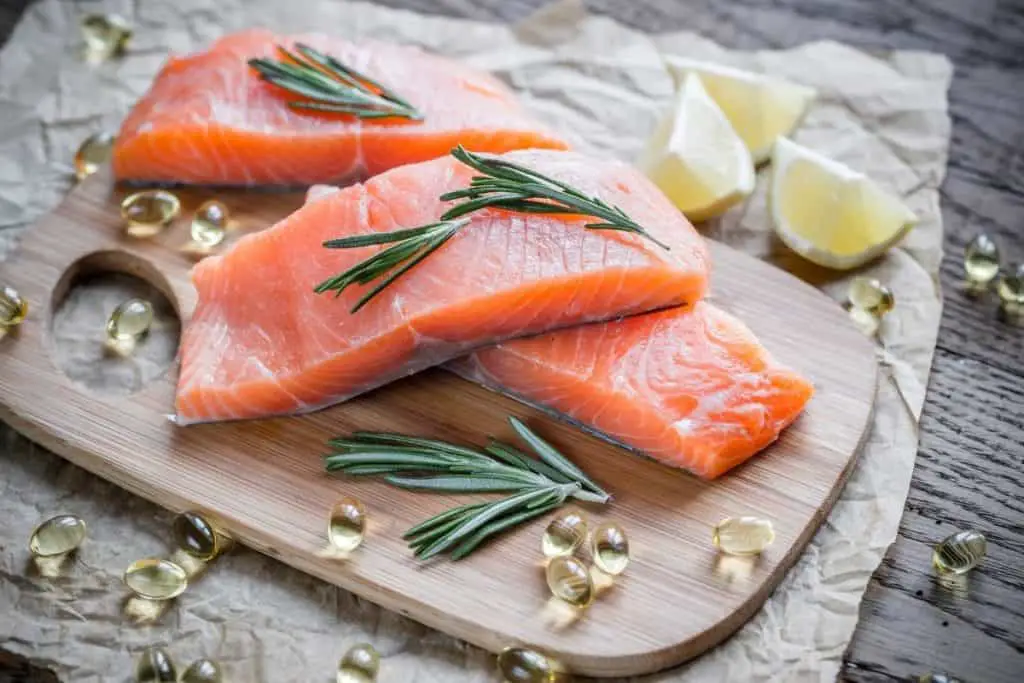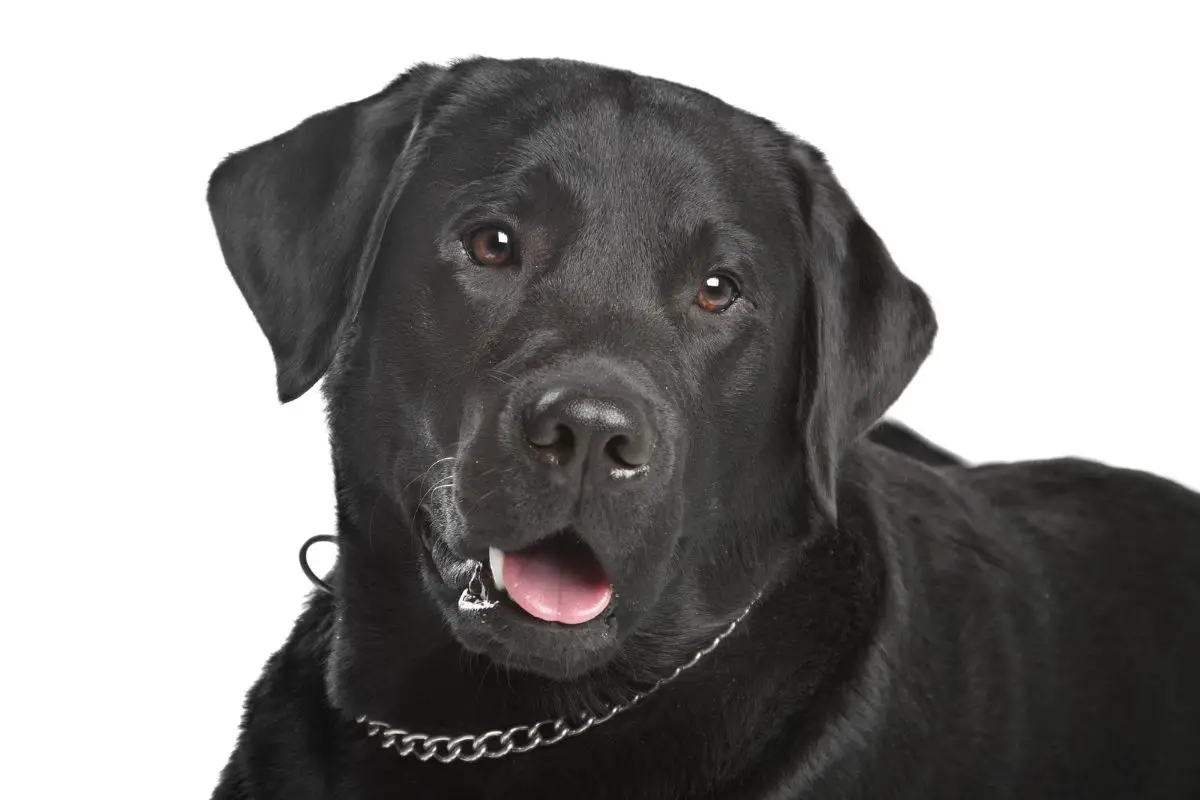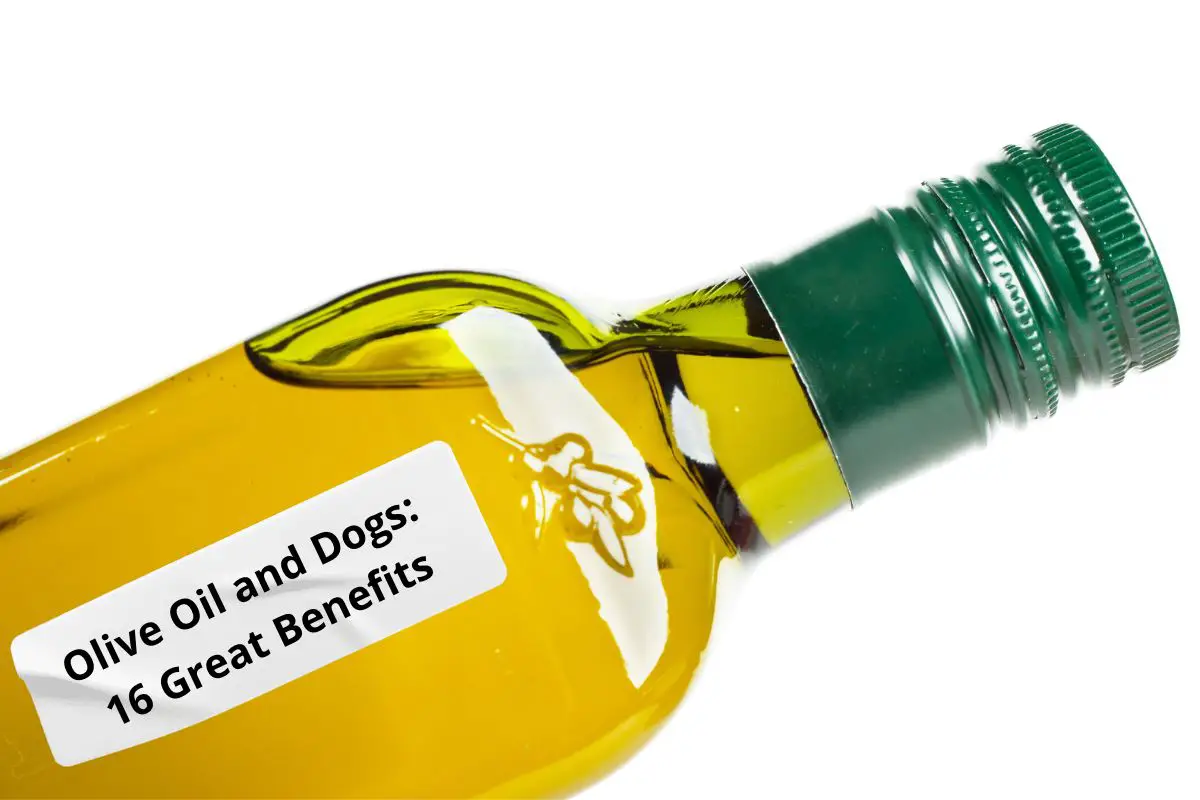This post contains affiliate links.
Some find it hard to accept that fats are just as crucial to their dog’s diet, and the few that do find it challenging to add more fat to their dog’s diet. You may belong in the confused bunch if you’re here, so this is how you can add more fat to your dog’s diet.
To add more fat to your dog’s diet, look for food with Omega-3 and Omega-6 Fatty Acids. You can find these fats in oils like coconut, krill, olive, sunflower, corn, or superfoods like flaxseed, hemp, and pumpkin seeds. You can also opt for supplements or dog food high in fat.
This article will explain why dogs need fats and the type of fat dogs need. It will also help you determine if your dog needs more fat and give you tips on how to add more fat to your dog’s diet.
Table of Contents
Why Do Dogs Need Fats?
Raw fats involve themselves in all metabolic processes. Different fats are essential for your dog’s health and well-being because your dog’s body cannot produce essential fatty acids in their natural form, so it needs to consume them through food.

For dogs, the essential fatty acid is Omega-6 linoleic acid. Omega-3 fatty acids, which are docosahexaenoic and eicosapentaenoic, are not technically essential. However, some use them as nutritional supplements in dog food for multiple benefits, including improved brain function and anti-inflammatory effects.
What Kind of Fats Do Dogs Need?
Most people tend to think about fats negatively, but there are good fats and bad fats. Yet again, good and bad fats in one’s diet generally affect humans more than dogs. Whereas certain types of fat link themselves to heart disease and stroke in humans, the same is not valid for pets. The exchange of fats in their bodies is different.
For example, plastic fats are saturated fats found in meat-based diets for dogs. They provide many benefits, including improving the taste and texture of food and converting energy through metabolism.
They also supply high-calorie energy for physical movement, thermoregulation, growth and reproduction, and aid in the digestion and absorption of fat-soluble vitamins. These fats are deposited and stored in adipose tissue for future use as energy if needed.
Meanwhile, functional fats are usually, but not always, essential fatty acids (EFAs). They are necessary because dogs cannot synthesize them independently, so they must get them from their food. EFAs are Omega-6 and Omega-3. Pets need a balance of both fatty acids for good health.
Omega-3s, in particular, play a massive role in your pet’s well-being. They can act as anticoagulants, which help prevent blood clots. They also contain anti-inflammatory properties, which relieves dogs in pain. However, note that too much of this fat isn’t a good thing either.
Essential Fatty Acids That Your Dog Needs
- Linoleic Acid (LA), which you can find in soybean, safflower, hempseed, and corn oil. If your dog doesn’t possess enough Linoleic Acid, skin conditions may bother them. You may also find that your dog acts sluggish.
- Alpha-Linolenic Acid (ALA), which you can find in chia seed, flaxseed, hempseed, and walnut oil. Dogs use this acid to create other essential acids that help with brain, eye, and body function.
- Arachidonic Acid (ARA), which you can find in poultry, eggs, and meat. This acid is crucial for brain function, and if a puppy lacks it during its growth phase, it can result in a mentally slow adult dog.
- Eicosapentaenoic Acid (EPA), which you can find in oily fish like herring, sardines, and salmon. If your dog lacks this acid, you’ll notice a lack of cheerfulness and even symptoms of depression. At the same time, Eicosapentaenoic Acid also acts as an anti-inflammatory acid.
- Docosahexaenoic Acid (DHA), which you can find in oily fish as well. This acid helps your dog think and remember things. It’s essential in brain and eye function, so dogs lacking it may not think, remember, hear, or see well.
Omega-3 Fatty Acids
Omega-3 deficiency is currently a widespread nutritional deficiency in pets and causes or exacerbates a wide range of conditions, including allergies, dermatitis, vision problems, heart problems, kidney disease, cognitive dysfunction, and arthritis.
You may have heard that flaxseed oil is a good source of Omega-3, but keep in mind that it is in a vegetable form called alpha-linolenic acid. Pets may genetically lack the enzymes needed to convert plant sources of omega-3 fatty acids from hemp and flaxseed to DHA. It is sometimes recommended that DHA and EPA are supplied directly from food sources.
Krill oil is rich in EPA and DHA. These anti-inflammatory fats are found naturally in seafood but don’t expect them to get significant amounts in fishmeal-based pet foods. You can feed your pets with sardines or wild-caught salmon for valuable omega-3s, or try krill oil. If your pet is currently healthy, you may add krill oil as follows:
- 250 mg (0.25 g) per day for miniature dog breeds;
- 500 mg (0.02 g) daily for small dogs;
- 1000 mg (0.04 g) daily for medium-sized dogs;
- 1500 mg (0.05 g) daily for large dogs;
- 2000 mg (0.07 g) per day for dogs weighing over 36 kilograms (79.36 lbs).
If you buy bottled liquid oils, there is a much greater risk of oxidation over time, and fat in human dosage in capsule form is almost impossible to dose correctly for a dog. Besides, the balance of fatty acids in such preparations prevails towards ALA and may not contain DHA. It would also help if you were wary of Omega-3 fatty acids added to commercial pet food, as they can turn rancid over time. You’ll need to store the dog food in optimal spots.
Omega-6 Fatty Acids
Yet again, Omega-3 deficiency is rare in dogs because commercial pet food tends to provide too much of it. However, Omega-6 isn’t as famous. Additionally, lack of Omega-6 fats in your pet’s diet can lead to low overall development and an inability to gain weight. It can also compromise your animal’s immune system and cause degenerative liver and kidney disease, behavioral disturbances, and poor healing of wounds, abrasions, and sores.
If you need to add omega-6 fats to your pet’s diet, which usually only happens with some homemade diets, then flaxseed, hemp, and pumpkin seeds are better choices compared to sunflower, corn, or olive oil.
Benefits of Coconut Oil for Dogs
Coconut oil for pets is a very healthy product, but it shouldn’t replace the fats discussed above.
A recommendation is a quarter teaspoon of 100% organic cold-pressed coconut oil for every 5 kg of pet’s body weight, twice a day. You can add it to fresh, balanced homemade diets or commercial wet foods.
Coconut oil is a concentrated source of medium-chain triglycerides (MCTs) that can improve your pet’s cognitive function. Additionally, coconut oil is a rich source of lauric acid, which is a powerful antimicrobial agent. It makes it an excellent choice for dogs with fungal dermatitis or allergies. It can also help with mats and matted hair in cats and is used topically to treat skin conditions.
Keep in mind that although coconut oil is generally safe for dogs, some pets may be allergic to it. While pets with pancreatitis should avoid most types of fats because it requires the pancreas to secrete additional lipase to break down fat, coconut oil is passively absorbed through the gastrointestinal tract and does not require lipase for digestion. Hence, it is safe for sensitive animals in this regard.
However, note that coconut oil is high in calories, so if your pet is already overweight, gains weight quickly, or does not absorb fat efficiently, take caution in using coconut oil. Likewise, start offering it small and gradually increase it as your pet gets used to it. This will help prevent fatty stools, upset stomach, or diarrhea, which are side effects of taking too much oil at once.
How To Know if Your Dog Needs More Fats
Like every human being, every dog has an individual metabolism, depending on age and activity level. If your dog gets more calories than it needs, they are stored as fat, which in the worst case can lead to obesity.
While weighing and controlling your dog’s weight is a good idea, it may not be so easy if the dog is large or very agile, and with so many differences between breeds, it’s not easy to figure out what is right for your dog. Generally speaking, if your dog exceeds its recommended weight, it may not need more fats in its diet. However, if it’s below its optimal weight, you may need to add fats to your dog’s diet.
A physical assessment will allow you to assess your dog’s excess weight at home quickly and without consequences. It will also help identify the problem of excess weight before the scale shows it.
Determine if Your Dog Needs More Fats or Not
Doing a physical assessment is easy. Just follow the instructions. To assess if your dog needs more or less fats:
- Check your dog’s ribs. Place your dog in a comfortable position and run your palms over its ribs. Note how their ribs feel underneath your touch. If your dog is in good condition, you will feel ribs underneath a thin layer of fat.
- Look at your dog from the side. It’s best to view your dog from its height to get a clearer view when doing this. Its belly, the part in front of the hind legs, should be tucked up when viewed from the side.
- Inspect your dog from above. Its waist should be visible from above in an hourglass-like shape, and its belly should be drawn in.
Your dog may need more fat if:
- You can see your dog’s ribs, lumbar vertebrae, pelvic bones, and other bones from afar. This often means your dog possesses no fats, and it’s highly evident that they lost muscles.
- You can see your dog’s ribs, lumbar vertebrae, and pelvic bones. Your dog’s fat is not palpable, and its bones are visible with minimal muscle loss, too.
- You can easily feel your dog’s ribs and see them without any fats insulating them. This means that your dog’s lumbar vertebrae’s tops are visible alongside its pelvic bones, and you can quickly notice your dog’s waist.
Your dog may need to lessen fat if:
- You can feel your dog’s ribs under a slight excess of body fat. You may also slightly see its waist from above, but you’ll notice it’s not pronounced. A weak abdomen may accompany this as well.
- You can barely find the ribs under the fat layer. You note noticeable fat deposits above its loin and at its base of the tail, too, and find that your dog’s waist is missing or barely visible, and its belly can be tucked up.
- Your dog’s ribs are not palpable under a thick layer of fat or can only be palpated with intense pressure. You’ll realize severe fat deposits on your dog’s body and base of tail accompany this. You’ll also notice that your dog’s waist is absent, and its abdomen is not pulled in. Your dog’s waist may also look large and floppy or slightly protruded.
- Your dog possesses evident fat deposits on the sides, back, and at the base of the tail. You’ll find that its waist is not visible, and deposits of fat on the neck and limbs decorate your dog’s body.
After assessing your dog’s physical condition, you need to understand your next actions, if necessary. If your dog is underweight or overweight, talk to your veterinarian about fat feeding or how to get it in shape. If everything is okay with your dog, everything is fine, and you may choose to only occasionally add more fat to your dog’s diet.
How To Add More Fat to Your Dog’s Diet
If you decide that your dog needs more fats in its diet, but you’re clueless about how to do so, this section will explore the ways you can add more fat to your dog’s diet. To do so, start by assessing your dog’s current diet to see where you can add the missing fats.
Add Fats to Beef and Related Meats
Remember that beef contains high amounts of saturated fats and low polyunsaturated fats. Likewise, it doesn’t possess an optimal amount of ALA and LA, so you’ll need to add those. To do so, you can look for hemp seed oil or walnut oil. As a general guide, you need to add 1 teaspoon (5mL) of hemp seed or walnut oil equivalent to 1 pound (0.45 kg) of 90% lean ruminant meats.
Add Fats to Chicken and Poultry Products
You need to know that chicken contains a high amount of polyunsaturated fats like LA. Hence, you’ll need to add ALA to poultry products. Food high in ALA are flaxseeds and chia seeds. You can use the seed or oil versions. In general, 1 teaspoon (5mL) of chia seed or flaxseed oil needs 1 pound (0.45 kg) of chicken.
Some Things To Note When Adding Fats to Your Dog’s Diet
Remember to consider your dog’s size and lifestyle before adding fats to its diet. Additionally, ensure that you follow the recommended servings, especially since too much fat can cause adverse effects to your dog. If you’re unsure about something, visit your dog’s vet to seek answers.
If you proceed with adding fats to your dog’s diet, keep in mind that you need high-quality and fresh fats. Fats tend to turn rancid quite quickly, and rancid fats open your dog to various health problems, including diarrhea, cell damage, arthritis, liver and heart problems, or even death.
It’s best to opt for natural fats rather than dog food-added fats since improper storage can turn the fats rancid, but if you don’t have a choice, ensure that you take proper storing measures.
Dog Food Recommendations
If you don’t have time to hunt for foods high in fat or to add them to your dog’s food, consider these high-fat dog food on Amazon:
Royal Canin Dry Dog Food
Royal Canin serves small dogs, medium dogs, big dogs, and specific dogs like Labrador Retrievers, Chihuahuas, Shih Tzus, German Shepherd, and others. You can say they’re relatively senior and well-experienced in their role, and they’re also popular among dog owners.
Manufacturers classify Royal Canin feeds as a super-premium class. However, veterinarians refute this statement, as they find some disadvantages in the feed: a low fiber content, which is at 1.2%. The feed contains animal protein, cornflour, corn, wheat flour, animal fats.
Royal Canin doesn’t indicate the percentage of components, making it challenging to talk about a balanced diet. Also, not all of its ingredients are digestible. Yeast, which in some cases can cause allergies, became additional additives.
Bully Max High-Performance Food
Bully Max features a High-Performance Dog Food suitable for puppies and adult dogs. It features a meat-based formula with high calories and proudly showcases having never been recalled. It also boasts all-natural ingredients free of corn, wheat, and soy.
Bully Max features a High-Performance Dog Food suitable for puppies and adult dogs. It features a meat-based formula with high calories and proudly showcases having never been recalled. It also boasts all-natural ingredients free of corn, wheat, and soy.
Nature’s Logic Canine Feast
Nature’s Logic is steadily gaining fame, and it shouldn’t come as a surprise since they provide high-quality dog food. They offer nutrient-complete meals in different flavors like beef, chicken, venison, turkey, duck, lamb, pork, sardine, and rabbit.
Final Thoughts
Each dog is unique, so you need to understand that food choice must consider your dog’s individual needs for nutrients and the amount of energy expended. Since a dog is a predator with a protein-fat metabolism, fats are a full-fledged energy source. You can add more fats to your dog’s diet by mixing high-fat oils or superfoods in its regular kibble or obtaining dog food high in fat.
Sources
- PetMD: Why Fat is Good for Your Dog
- Healthline: Omega-3-6-9 Fatty Acids – A Complete Overview
- Dogs Naturally Magazine: Balancing Fats For A Healthier Dog
- K9 of Mine: 5 Best Dog Foods for Weight Gain – How to Bulk Up Your Canine!
- Purina: How to Help Your Dog Gain Weight
Mrdogfood.com is a participant in the Amazon Services LLC Associates Program, an affiliate advertising program designed to provide a means for sites to earn advertising fees by advertising and linking to Amazon.com. We also participate in other affiliate programs which compensate us for referring traffic.









